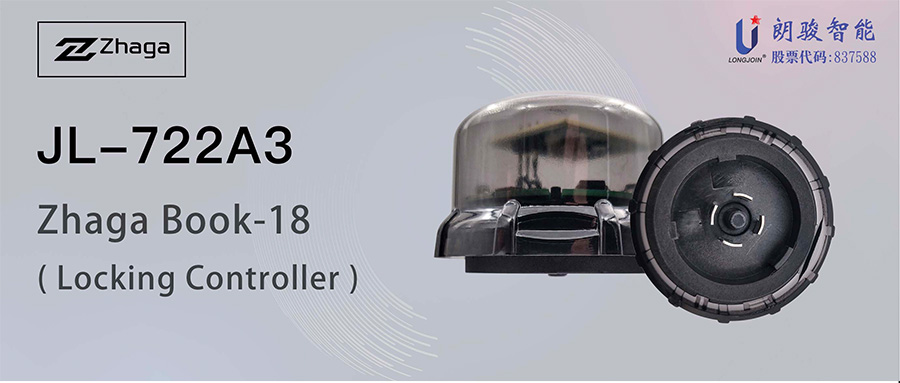
JL – 722A3 es un controlador de bloqueo basado en el estándar de tamaño de interfaz zhaga book18, que utiliza un sensor de combinación de detección de luz y Movimiento de microondas para producir la señal de oscurecimiento Dali. El controlador es adecuado para la iluminación de carreteras, césped, patio, Parque, estacionamiento, Industria y minas, etc.
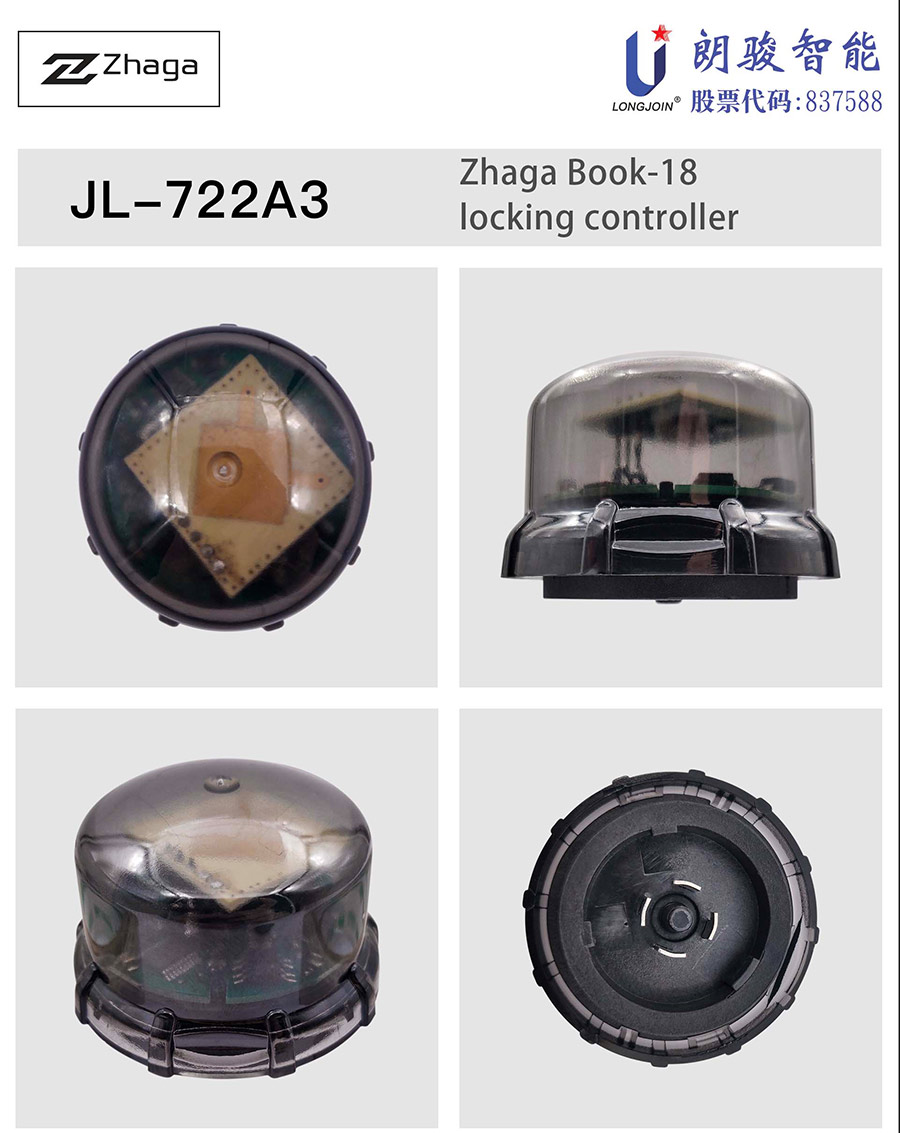
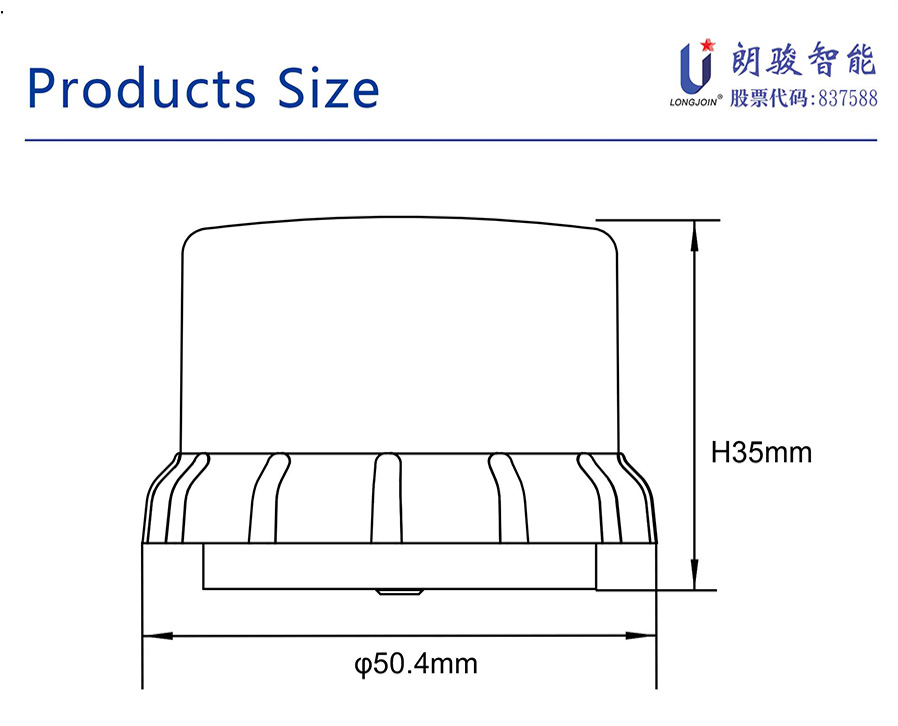
Feature
*DC power supply, low power consumption
*Conform to Zhaga Book18 interface standard
*Microwave anti false triggering, available indoor and outdoor
*Automatic dynamic microwave frequency adjustment to avoid mutual interference in dense installation
*Small size, suitable for installation to various lamps
*Support DALI dimming mode
*Light sense+microwave, on-demand lighting, more power saving
*Design of preventing false triggering of interference light source
*Filter design of reflected light of lamps
*The waterproof protection level is up to IP66
Product Parameters
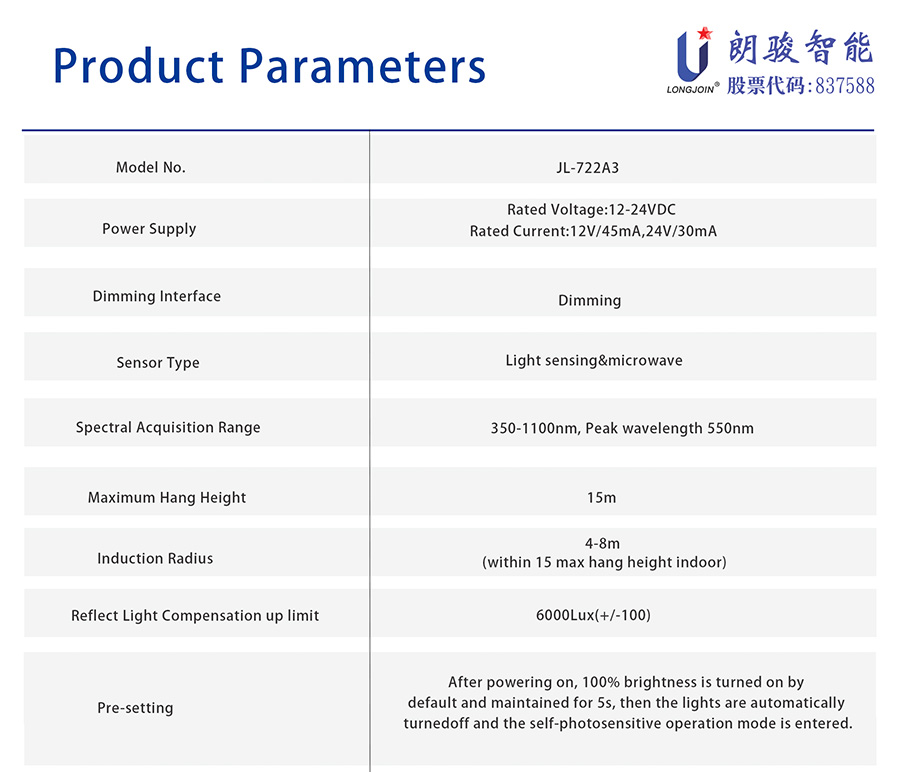
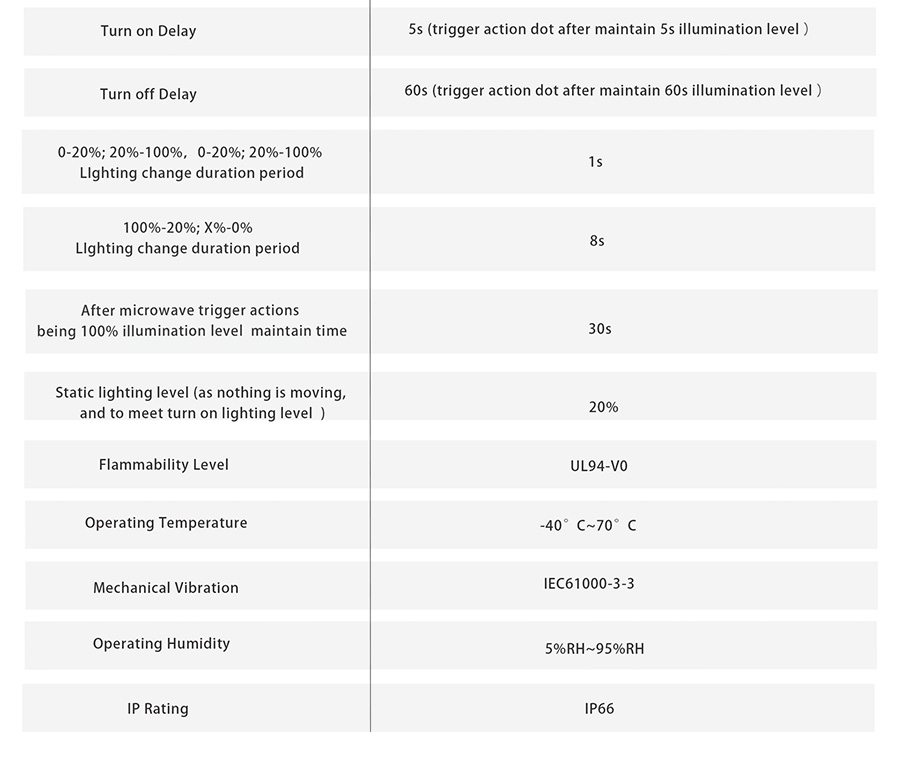
Remarks:
*1:
a. If the luminous surface of the lamp is completely shielded and isolated from the light-sensitive surface of the controller during installation, that is, no reflected light enters the controller after the lamp emits light, then the illumination when the lamp is turned off at this time is equal to the lower limit value, that is, the illumination when the lamp is turned off next time is about=default on illumination+40lux compensation value=50+40=90lux;
b. If the light emitting surface of the lamp and the light sensing surface of the controller cannot be completely shielded and isolated during installation, that is, after the lamp is lit, there is reflected light entering the controller. If the current ambient illumination collected by the controller is 500 lux after the lamp is lit to 100%, the next time the illumination is turned off is about=the current ambient illumination+40=540 lux;
c. If the power of the lamp is very high and the light emitting surface installed on the lamp is very close to the sensitive surface of the controller, the reflected light after the lamp is lit to 100% exceeds the upper limit of compensation, that is, the controller detects that the ambient illumination after the lamp is turned on is always more than 6000lux, then the controller will automatically turn off the lamp after 60s.
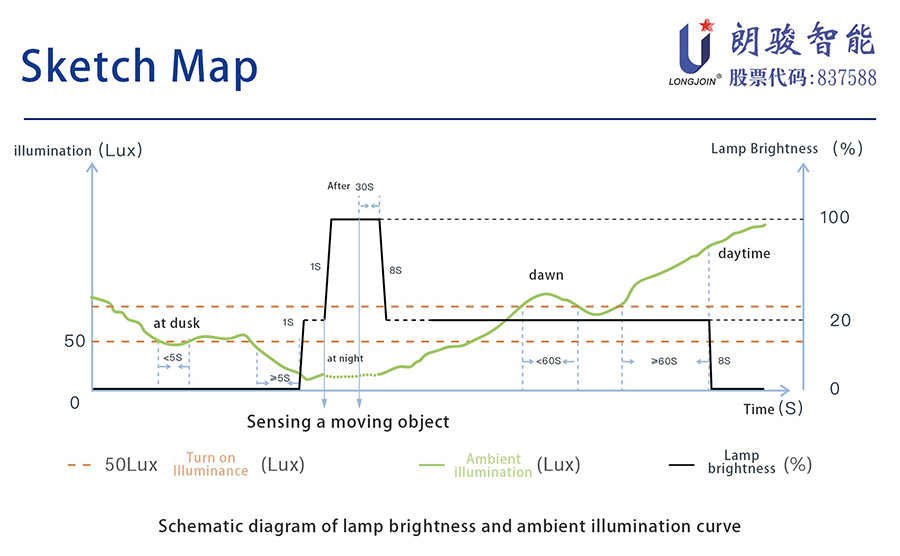
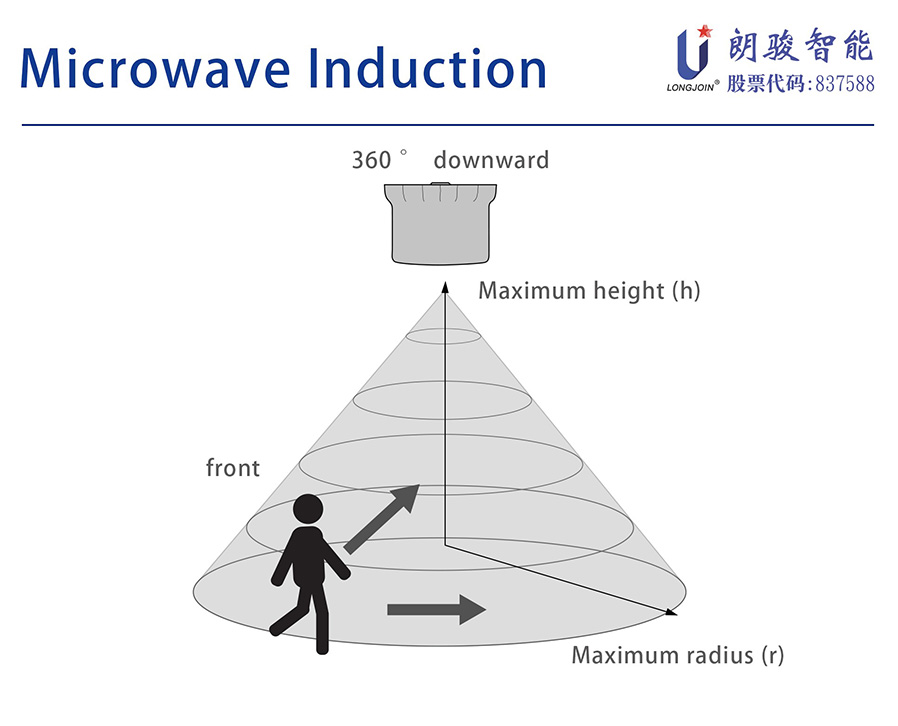
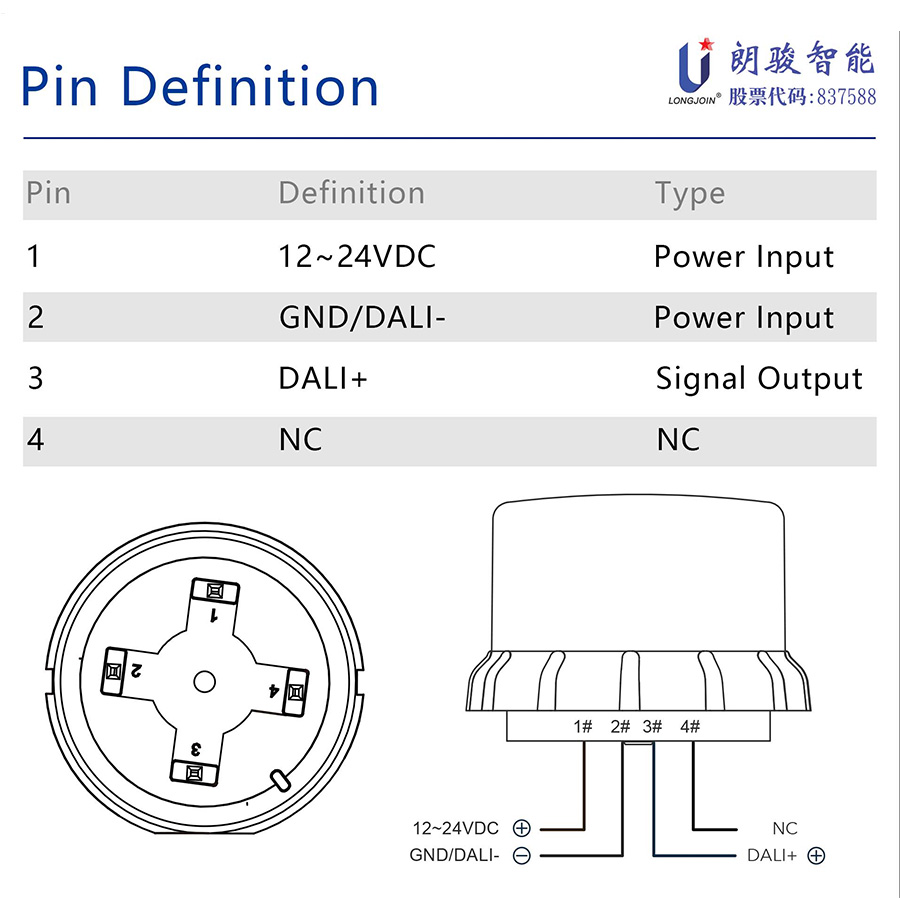
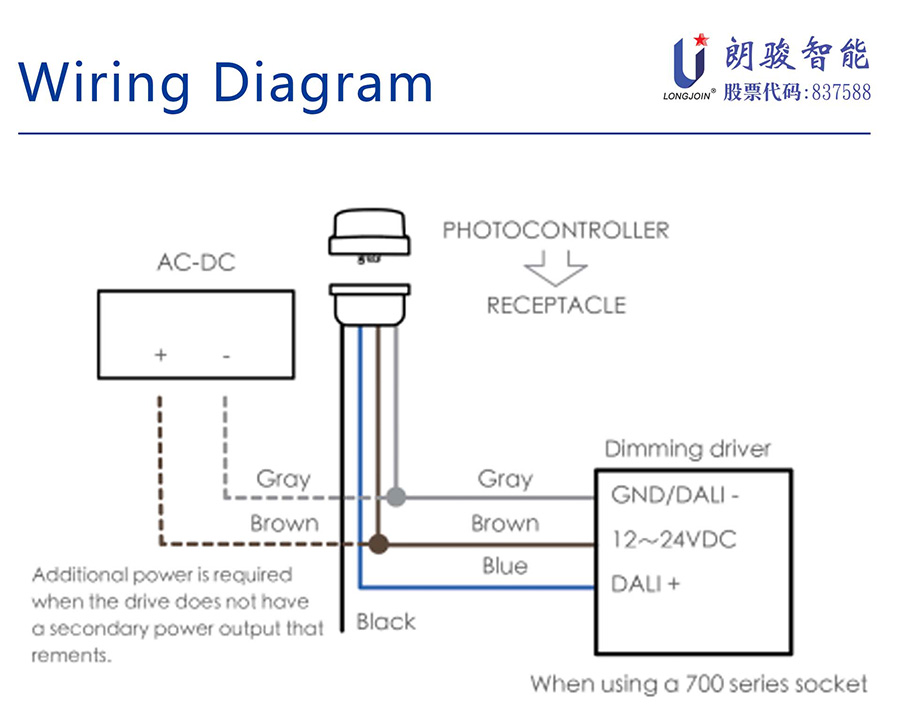
Installations
The interface of the product itself has been treated as fool-proof. When installing the controller, you only need to screw the controller directly to the base. Tighten it clockwise after inserting it as shown in the figure below, and loosen it counterclockwise when removing it.
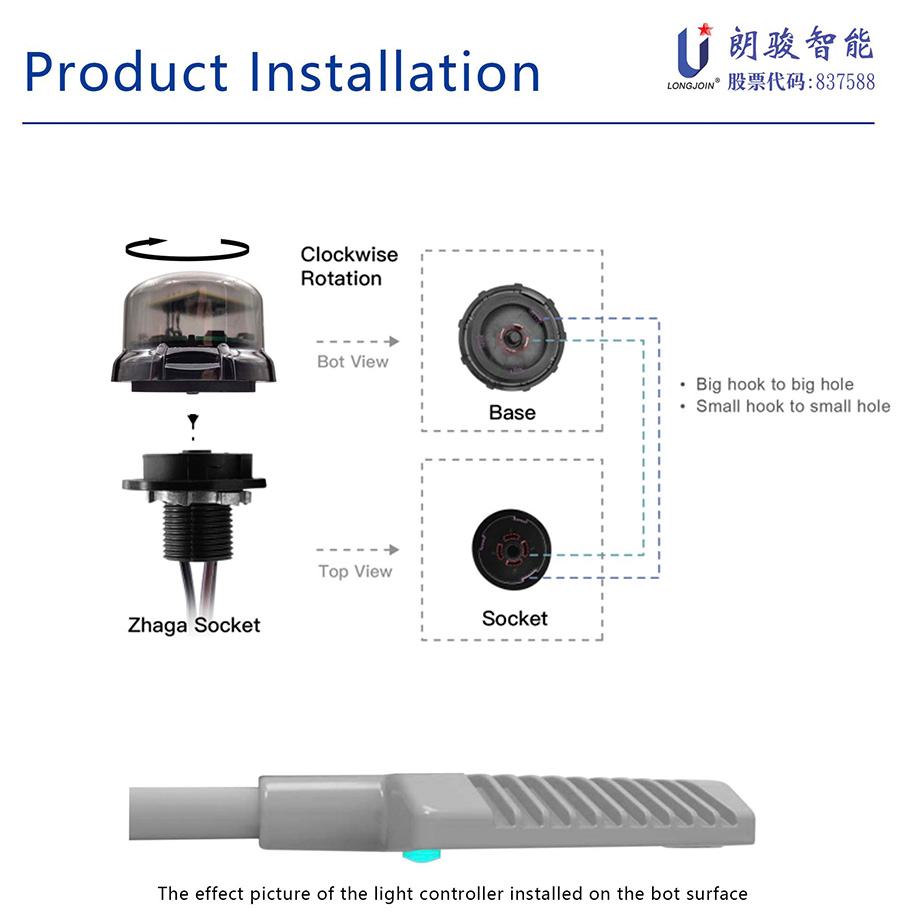
Precautions for use
1. If the negative pole of the auxiliary power supply of the driver is separated from the negative pole of the dimming interface, they need to be shorted and connected to controller # 2.
2. If the controller is installed very close to the light source surface of the lamp, and the power of the lamp is relatively large, it may exceed the reflected light compensation limit, causing self illumination.
3. Since the Zhaga controller does not have the ability to cut off the AC power supply of the driver, the customer needs to select a driver whose output current can be close to 0mA when using the Zhaga controller, otherwise the lamps may not be completely turned off. As shown in the output current curve in the driver specification, the minimum output current is close to 0mA.
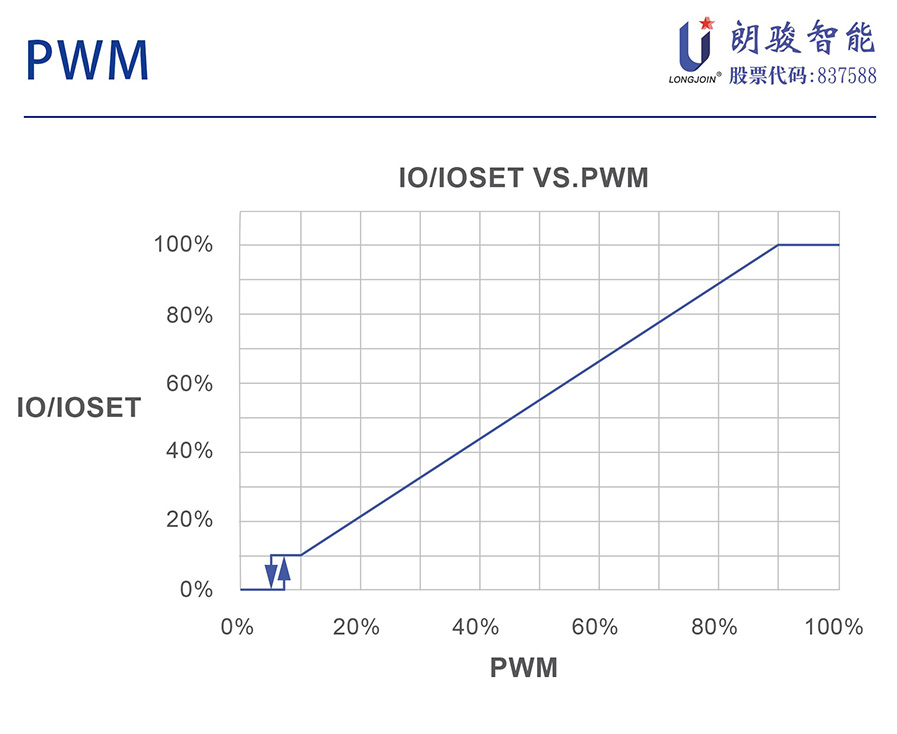
4. The controller only outputs the dimming signal to the driver, independent of the power load of the driver and the light source.
5. During the test, do not use your fingers to block the light sensitive window, because the gap between your fingers may pass through the light and cause the light to fail to turn on.
6. Please keep away from the microwave module for more than 1m when testing the microwave, because too close a distance may be filtered out as a false trigger, resulting in failure to trigger normally.
Post time: Dec-09-2022